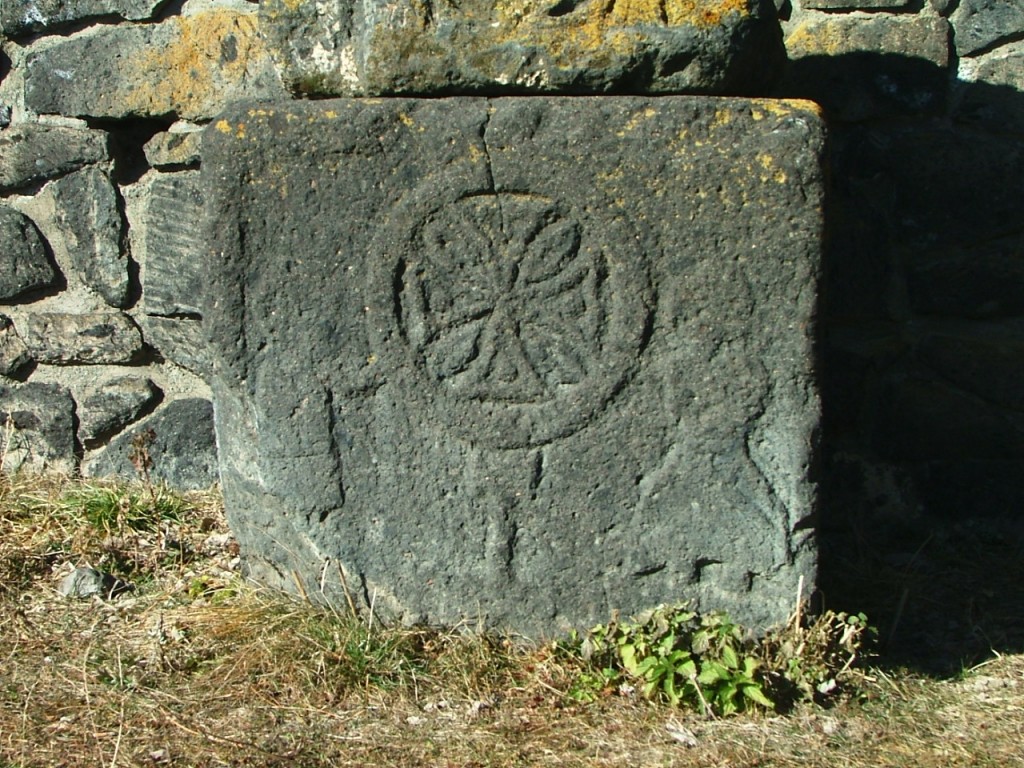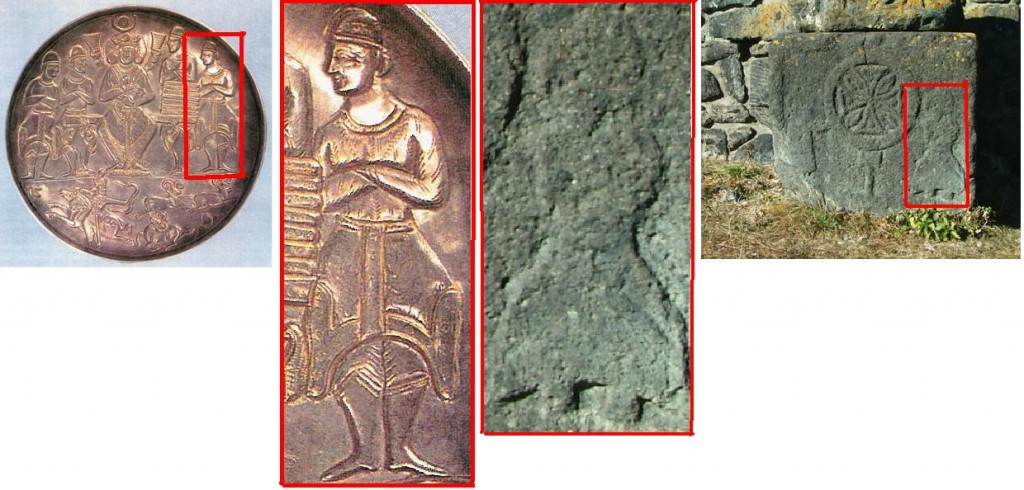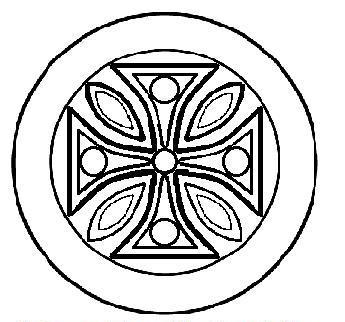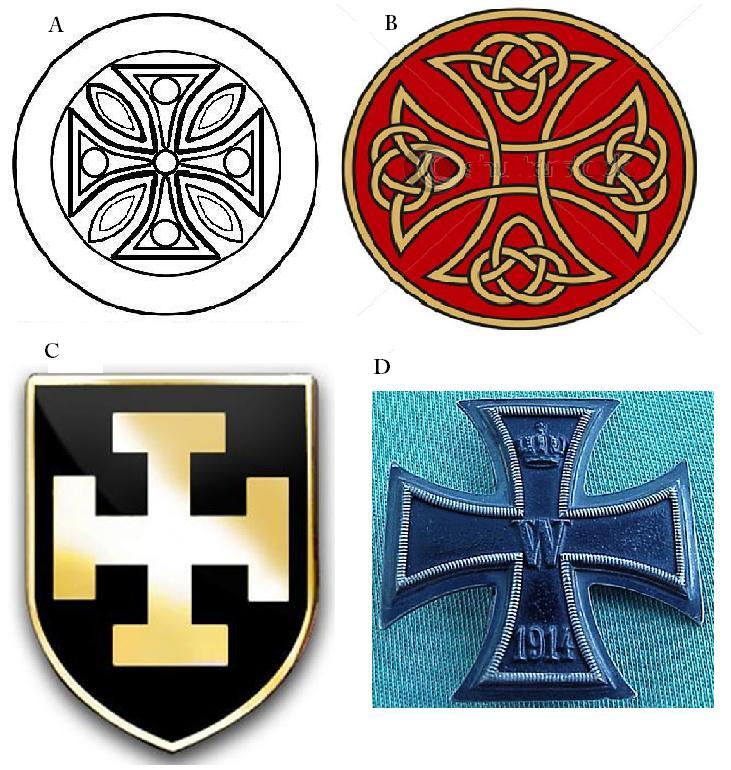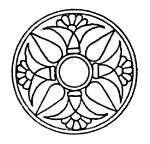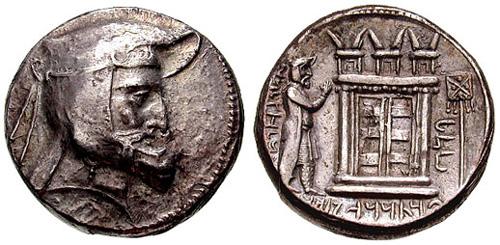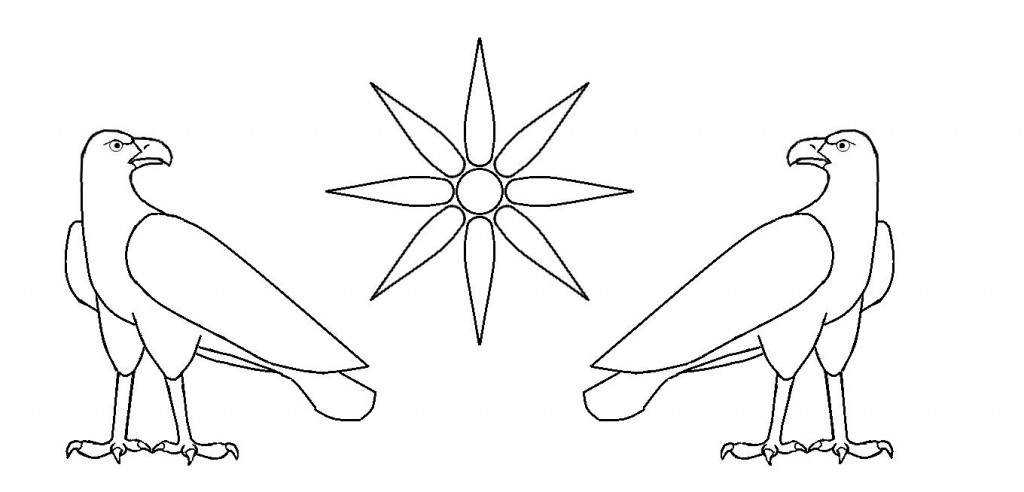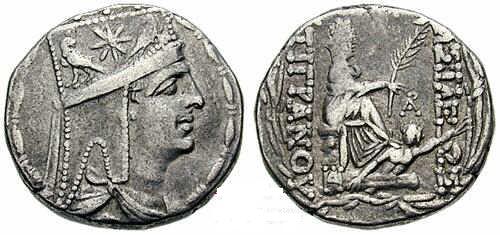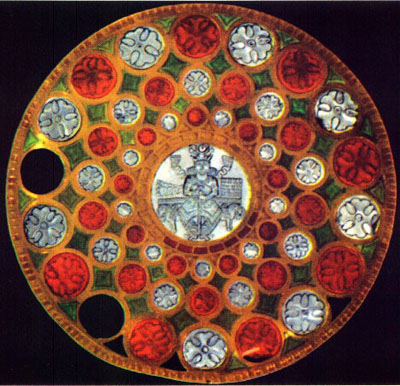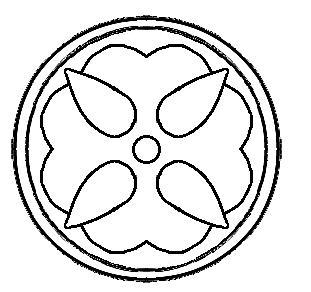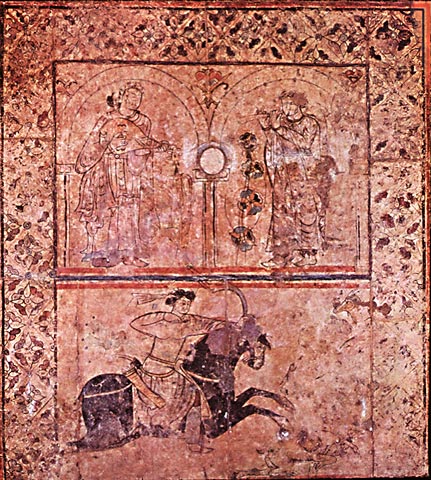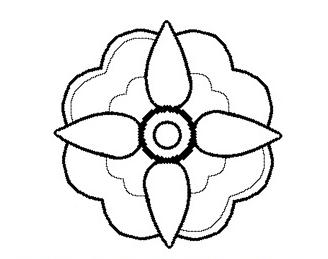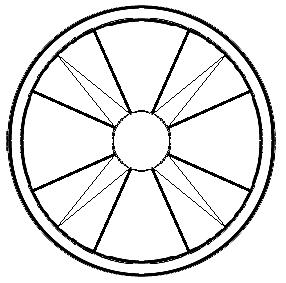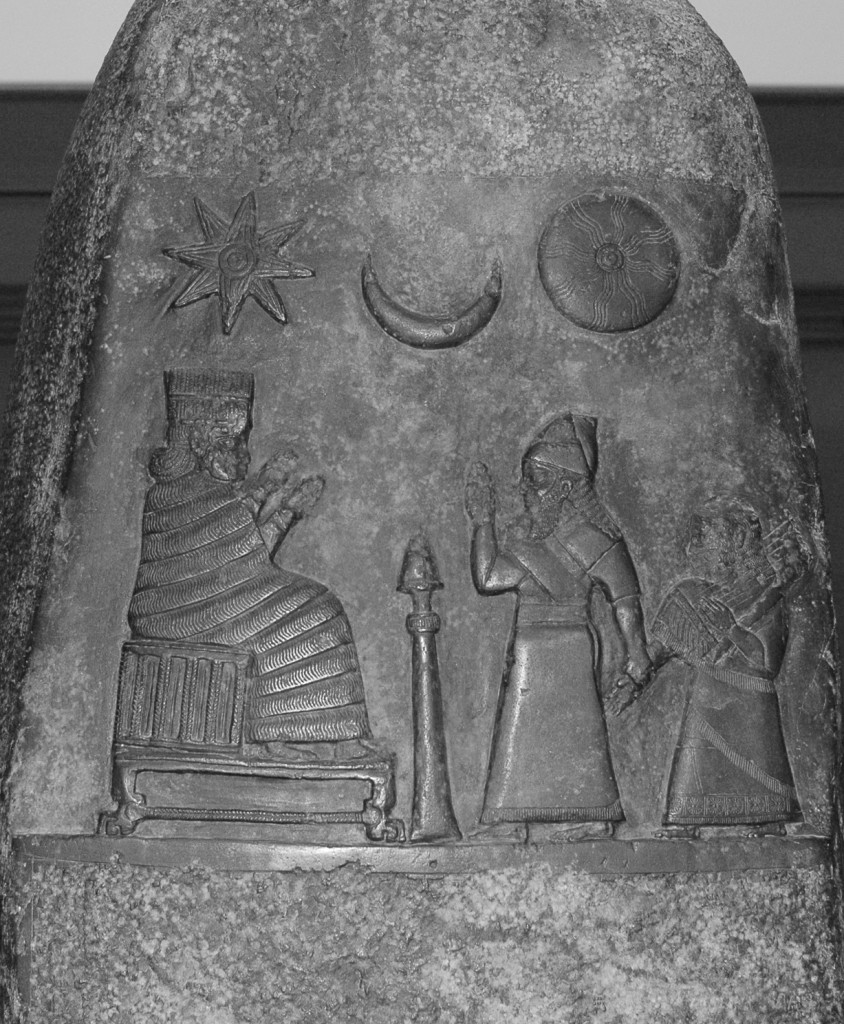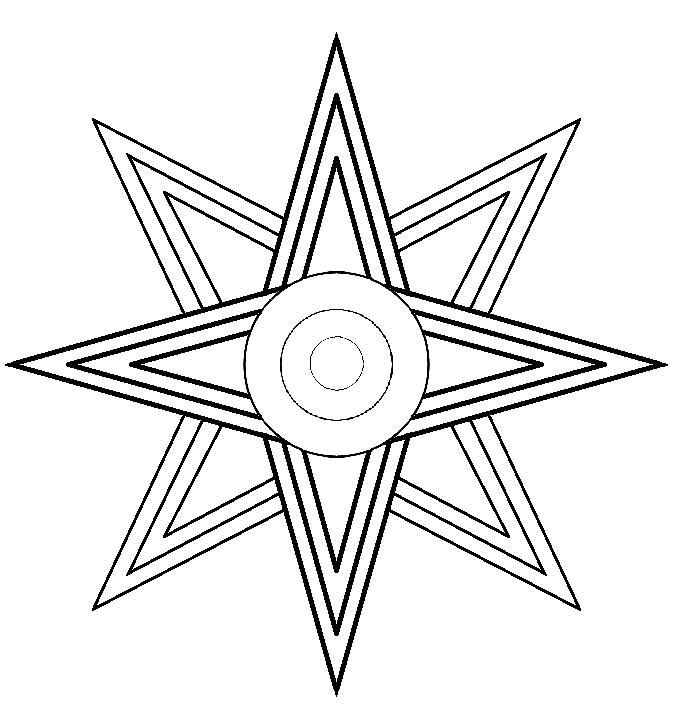The article below was first published on the Musings of the Masis: Posts of my observations from Byzantine, Persian and Armenian History website on April 10, 2011.
Kindly note that the version below is different from its original 2011 posting as it contains comments by Hamid Reza Zohoorian and Kaveh Farrokh, a Drafshe Kaviani drawing by Kaveh Farrokh and a 1971 reconstruction of the Drafshe Kaviani banner. The photo inserts below are also drawn from Kaveh Farrokh’s various lectures delivered at the University of British Columbia (2004-2018; 2019) as well as various American and European Universities and academic venues: Portland State University, University of Southern California, Stanford University, University of Yerevan, ASMEA, Siedlce University (Poland) and the Institute of History of Ukraine of the National Academy of Sciences of Ukraine and the National Military History Museum of Ukraine.
=============================================================
When I was in Armenia, I went to see the 4th century CE Basilica Church of “Surp Nshan” (Holy Seal) near Abaran.
COMMENT BY Kaveh Farrokh: The Armenian term “Nshan” is identical to the Persian term “Neshan” which means seal or emblem.
[CLICK TO ENLARGE] Photo taken in November 2010, at the Surp Nshan Basilica, Republic of Armenia. NOTE COMMENT BY Hamid Reza Zohoorian (originally in Persian): The person standing to the right of the emblem is dressed exactly in the style of Sassanian era nobility – a style specifically seen from the time of Khosrow I Anoushiravan (r. 531-579 CE); note that the stance and gaze of the person is again exactly in the style depicted in Sassanian arts. For further analysis see image comparisons below. [CLICK TO ENLARGE] PHOTO INSERT & COMMENTARY BY Kaveh Farrokh: Sassanian metalwork at right depicting Khosrow I Anoushiravan and four Sassanian knights (possibly the Sassanian Empire’s primary generals). Note the stance of one of the knights from the plate highlighted for reference. Note the figure highlighted on the Surp Neshan Basilica – the parallels of this form (despite the wear of weather over the centuries) with its Sassanian counterparts are virtually exact.Outside in the courtyard are some ruins, one of which caught my eye. It had a Cross inside a circle, and itself looked like a banner used in battle as it was upon a pole. At either side was a person, eroded away, yet still visible.
A more clear drawing of the cross in the standard on the stone.
PHOTO INSERTS & DESCRIPTIONS BY Kaveh Farrokh: (a) Surp Neshan Basilica (4th Century CE) near Abaran in Republic of Armenia (b) Pagan Celtic Cross (Irish) (c) Medieval Crusader Cross of the Teutonic Knights (d) German Iron Cross circa World War One.
This looked like a battle standard, most likely used either by the Arshakuni kings of the 4th century or the Bdeshk families such as the Kamsarakan or Mamikonian.
Back in London I began to read about the Achaemenid empire, and came across a rendition of a motif from the tunic worn by King Darius I at Persepolis.
A motif on the upper sleeve on the tunic worn by King Darius I from the Stele at Persepolis (circa 500 BCE).
I also saw two coins minted by the Satrapy of Caria around 395 BCE and 344 BCE, and drew the motifs on their Reverse sides.
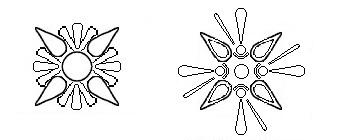 (a) Motif on a satrap coin of Caria, Hekatomnos, 395 BCE (b) Motif on a satrap coin of Caria, Hidrieus, 344 BCE.
(a) Motif on a satrap coin of Caria, Hekatomnos, 395 BCE (b) Motif on a satrap coin of Caria, Hidrieus, 344 BCE.
I then learned about the “Pazyryk” carpet from a tomb in the Altai mountains, that is dated to around 400 BC, originating from Achaemenid Iran. It bears many examples of the “Drafsh” motif.
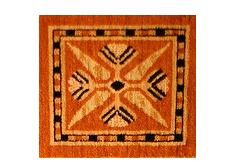 Motif on the Pazyryk carpet found in the Pazyryk valley in the Altai Mountains. This carpet is believed to have originated in Iran circa 400-500 BCE.
Motif on the Pazyryk carpet found in the Pazyryk valley in the Altai Mountains. This carpet is believed to have originated in Iran circa 400-500 BCE.
NOTE COMMENT BY Kaveh Farrokh: The Pazyryk carpet displays the first depiction of the Drafsh-e-Kaviani. The Pazyryk region was settled by North Iranic Scythian peoples. It is possible that the Parthians, who were of Scythian stock, introduced this ancient Iranic theme as Iran`s major national standard.
I also began to read about the Sassanian era, and the “Drafsh” of Kaveh, perfectly depicted on the reverse of this coin from around 100 BC of the ruler of Persis, Artaxerxes.
(Left) Artaxerxes, king of Persia (Right) Artaxerxes offering prayers in a temple. Note that the Drafsh of Kaveh is on the right-hand side.
NOTE COMMENT BY Kaveh Farrokh: The actual origins of the form of the Drafsh-e-Kaviani may be traced to the Achaemenid era, to the aforementioned Pazyryk carpet. There are four petals facing northwest, northeast, southwest and southeast with fixtures at north, south, east and west.
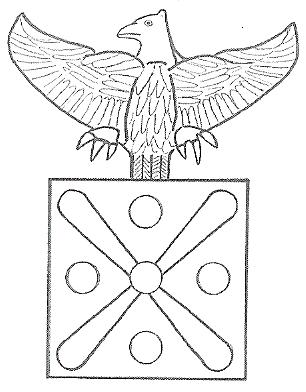
A reconstruction of the Sassanian Royal Standard, the Drafsh-e-Kaviani (Farrokh, 2005, p.22). There were apparently a number of versions of these, however the major national banner measured roughly 16 by 20 feet and was studded with gold, silver and jewels. This was captured by Arabo-Islamic forces after the Battle of Qaddisiyah in 637 CE. Note that the above version also displays the eagle which was seen among the royal standards of the Achaemenids, centuries before the Sassanians. The eagle symbol was viewed as a benevolent protector and sign of good heavenly fortune. Harper (1978, pp.84) has noted that Sassanian warriors often adorned their weapons with the feather decoration of the bird-god Varanga.
The Star motif was also used by the dynasty that ruled Pontus from 302 – 37 BC, among whom were king Mithridates VI. His ally and son-in-law was king Tigran II of Armenia, and below is my illustration of the motif used on his crown.
A Tetradrachm of King Tigran II. His crown bears the Star motif.
Reading Dr. Kaveh Farrokh’s book “Shadows In The Desert”-سایههای صحرا؛ ایران باستان در جنگ- Персы: Армия великих царей-I saw a photo of what is called the “Cup of Khosrow” and I noticed the “Drafsh” motifs which decorated it.
I drew an example of one of them.
One of the fifty-four “Drafsh” motifs displayed on the “Cup of Khostow” circa 579 CE.
On further reading of“Shadows In The Desert”-سایههای صحرا؛ ایران باستان در جنگ- Персы: Армия великих царей– I saw a photo of a fresco from the palace of an Ummayad Caliph, near ancient Palmyra. Called the “Qasr Al-Heir El Gharbi” the paintings have a border of “Drafsh” running around them.
Below is my drawing of one of them.
”Drafsh” motif on a fresco from an 8th century CE palace of Qasr al-Heir el-Gharbi , at Palmyra, Syria.
On further reading I learned that the “winged emblem of Zoroaster” had been in use before by the Assyrians.
Below is my drawing of a star motif on a stele from the reign of king Ashurbanipal II, circa 850 BCE.
Winged Sun-Disc on a motif of king Ashurbanipal II, from the city of Nimrud circa 850 BCE (Mosul Museum, Iraq).
This Star motif went back further, I saw a photo of a boundary stone from the reign of king Meli-Shipak II of Babylon, circa 1186 BCE which had the star on it.
My drawing of the star upon the boundary stone.
What can be surmised is that this star motif had a deep meaning in the successive dynasties of Mesopotamia, what it’s exact representation is though, is another question.
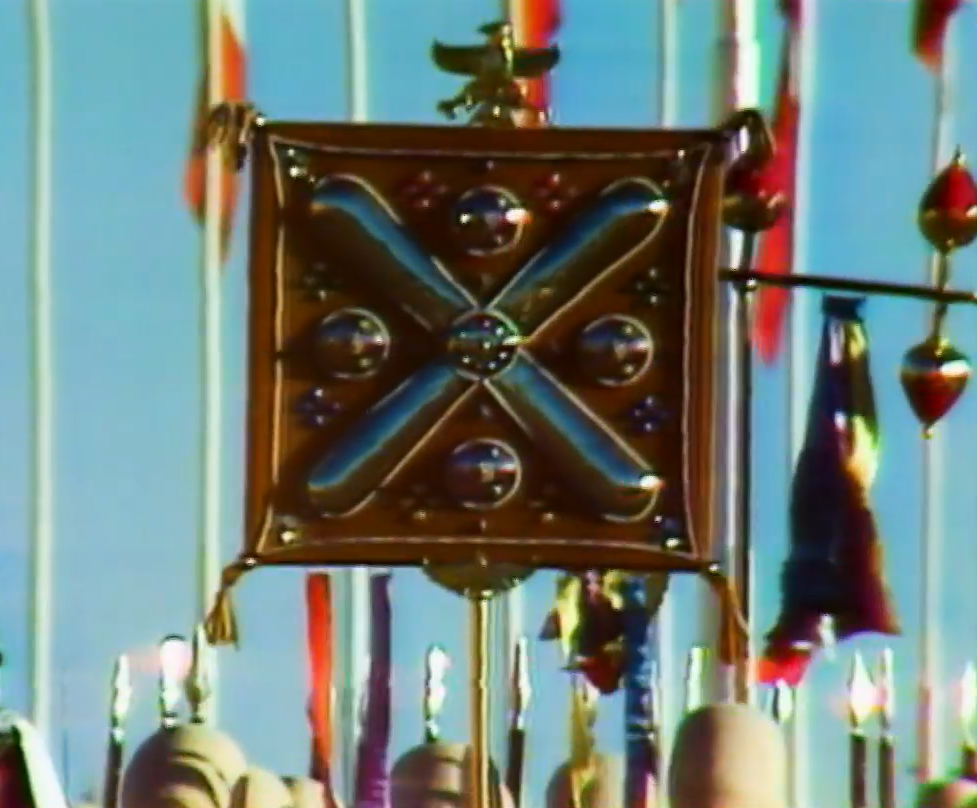
The Drashe Kaviani standard of the Sassanian Spāh (army) as reconstructed in 1971 (Source: Public Domain). it is possible that this standard was in use by the Parthians prior to the rise of the Sassanians.

